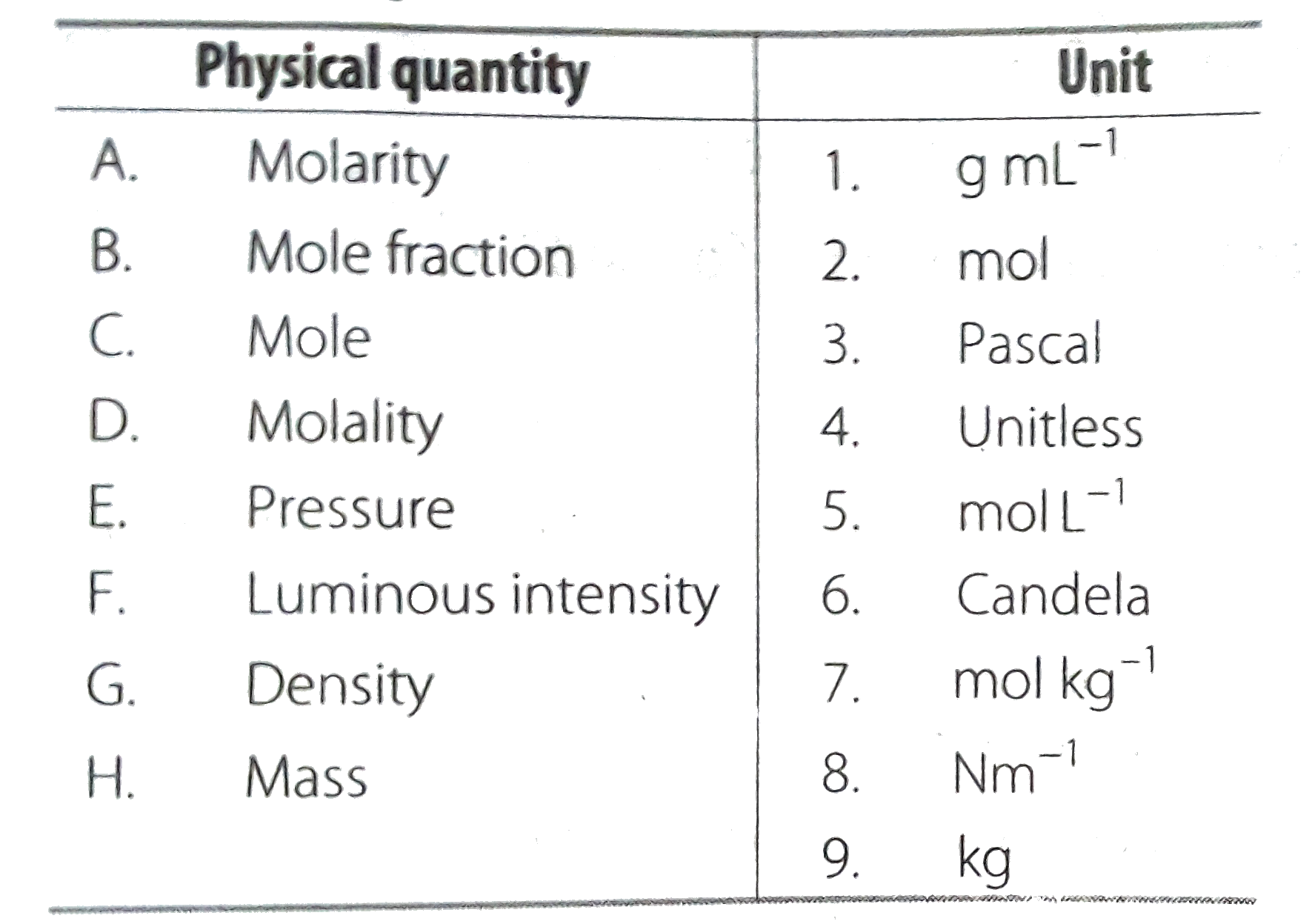Which of the following physical quantities is different from others?
Speed
Distance
Energy
Average velocity
The correct Answer is:D
To determine which physical quantity is different from the others among Speed, Distance, Energy, and Average Velocity, we will analyze each quantity based on whether it is a scalar or vector quantity.
1. Identify the Physical Quantities:
- Speed
- Distance
- Energy
- Average Velocity
2. Classify Each Quantity:
- Speed: This is defined as the distance traveled per unit time. Speed is a scalar quantity because it only has magnitude (e.g., 60 km/h) and no direction.
- Distance: This refers to the total path length traveled by an object. Distance is also a scalar quantity as it only has magnitude (e.g., 100 meters) and no direction.
- Energy: Energy is defined as the capacity to do work. It is a scalar quantity as well, having only magnitude (e.g., 50 Joules) and no direction.
- Average Velocity: This is defined as the total displacement divided by the total time taken. Displacement is a vector quantity because it has both magnitude and direction (e.g., 30 meters to the north). Therefore, average velocity is also a vector quantity.
3. Compare the Classifications:
- Speed: Scalar
- Distance: Scalar
- Energy: Scalar
- Average Velocity: Vector
4. Conclusion:
- The only quantity that is different from the others is Average Velocity, as it is a vector quantity, while Speed, Distance, and Energy are all scalar quantities.
Final Answer:
The physical quantity that is different from the others is Average Velocity.
- Speed
- Distance
- Energy
- Average Velocity
- Speed: This is defined as the distance traveled per unit time. Speed is a scalar quantity because it only has magnitude (e.g., 60 km/h) and no direction.
- Distance: This refers to the total path length traveled by an object. Distance is also a scalar quantity as it only has magnitude (e.g., 100 meters) and no direction.
- Energy: Energy is defined as the capacity to do work. It is a scalar quantity as well, having only magnitude (e.g., 50 Joules) and no direction.
- Average Velocity: This is defined as the total displacement divided by the total time taken. Displacement is a vector quantity because it has both magnitude and direction (e.g., 30 meters to the north). Therefore, average velocity is also a vector quantity.
- Speed: Scalar
- Distance: Scalar
- Energy: Scalar
- Average Velocity: Vector
- The only quantity that is different from the others is Average Velocity, as it is a vector quantity, while Speed, Distance, and Energy are all scalar quantities.
The physical quantity that is different from the others is Average Velocity.
Topper's Solved these Questions
- MOTIONBOOK - MCGROW HILL PUBLICATIONCHAPTER - MOTIONEXERCISE - HIGHER ORDER THINKING QUESTIONS
48 Videos
- MISCELLANEOUS QUESTIONSBOOK - MCGROW HILL PUBLICATIONCHAPTER - MISCELLANEOUS QUESTIONSEXERCISE - PART-B
99 Videos
- REFLECTION OF LIGHT BOOK - MCGROW HILL PUBLICATIONCHAPTER - REFLECTION OF LIGHT EXERCISE - HIGHER ORDER THINKING QUESTIONS
10 Videos
Similar Questions
Knowledge Check
Which of the following physical quatities is different from others?
ADisplacementBVelocityCForceDKinetic energyWhich of the following physical quantities has no unit?
ARelative densityBDensityCPressureDThrustWhich of the following physical quantity is demensionless :
AangleBstrainCspecific gravityDall of these
Which of the following physical quantities is an axial vector ?
View SolutionMatch the following physical quantities with units.

View SolutionWhich one of the following physical quantities does NOT affect the resistance of a cylindrical resistor?
View SolutionWhich one of the following physical quantities is a dimensional variable?
View SolutionWhich of the following physical quantities represent the dimensions of ba in the relations and t time ?
View Solution
